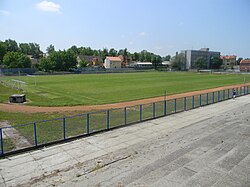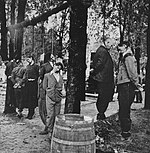Starčevo
Archaeological sites in SerbiaPančevoPopulated places established in the 6th millennium BCPopulated places in Serbian BanatPopulated places in South Banat District ... and 3 more
South Banat District geography stubsStarčevo–Körös–Criș cultureTowns in Serbia

Starčevo (Serbian Cyrillic: Старчево) is a town located in the Pančevo municipality, in the South Banat District of Serbia. It is situated in the Autonomous Province of Vojvodina. The town has a Serb ethnic majority and its population is 6,661 people (2022 census). The name of the town means "the place of the old man" in Serbian (starac, "elder"). The Neolithic Starčevo culture was named after the Starčevo site.
Excerpt from the Wikipedia article Starčevo (License: CC BY-SA 3.0, Authors, Images).Starčevo
Маршала Тита, City of Pančevo
Geographical coordinates (GPS) Address Nearby Places Show on map
Geographical coordinates (GPS)
| Latitude | Longitude |
|---|---|
| N 44.807222222222 ° | E 20.704722222222 ° |
Address
Маршала Тита 4
26232 City of Pančevo, МЗ Старчево (Старчево)
Vojvodina, Serbia
Open on Google Maps










